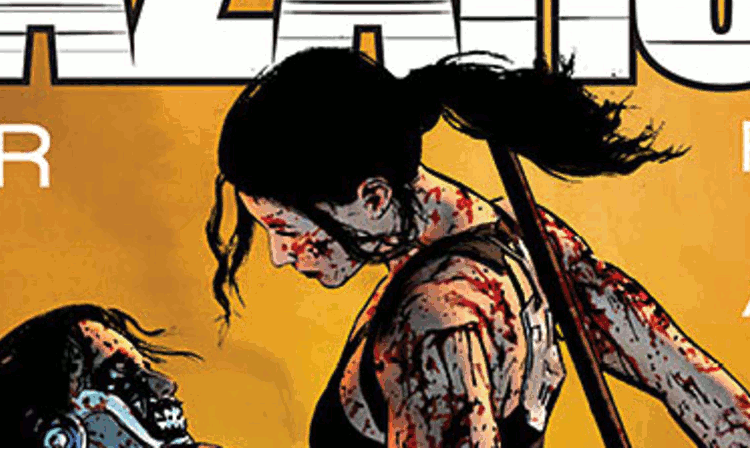Lazarus #4 Delivers on Epic Storyline

Lazarus #4
Story by Greg Rucka
Art by Michael Lark and Brian Level; Colors by Santi Arcas
Review by Gene Selassie
Note: The second paragraph of this review contains a few story arc spoilers.—Editor
It is rare in this day and age of decompressed storytelling that a story arc ends right when it feels it should. But writer Greg Rucka completely nails the landing with the conclusion to this opening arc of Lazarus.
After successful negotiations with a rival family, Forever Carlyle lies injured and on the verge of death, and like the first issue, the betrayal comes from within her own ranks. Rucka doesn’t reinvent the wheel here. But every trope that he utilizes — from Forever’s sister Johanna’s elaborate plan to extricate herself from the unfolding chain of events, to the subtle chemistry between Forever and the Lazarus unit of the rival Morray family — turns these tropes ever so slightly on their ear to make them feel fresh again. The beats of this arc lead to this point and what a bloody point that Forever makes. There is no holding back and it’s all earned, none of the violence is gratuitous.
The art … wow. I first encountered Lark’s work on GCPD and have been a very vocal fan since. While I felt the first two issues were a feeling out process, issue three was much stronger, and this one finally hit that note of writer/artist synchronicity that most comics rarely nail. The raw emotion that each character’s face and body language gave off toward the end of the issue informed us that this arc’s end is only just the beginning. The unsung hero of the creative team this issue is colorist Santi Arcas. From the fight scene in the dustbowl borderland between Carlyle and Morray territories to the lavish estates of each family’s patriarch, Arcas’ palette was pitch perfect. And kudos to Arcas and Rucka, or whoever came up with the idea to change up the color scheme as the time crept closer and closer to nightfall. Little nuances like that will make me stick around.
After a strong opening issue, the second one kind of meandered. Issue three was needed to get back on track. But issue four really tightened focus and closed out this arc with a bang.
Rating: 5 out of 5.
Gene Selassie is a screenwriter/filmmaker who has worked in many genres across numerous media. He wrote and directed the short film “Amaranthine,” which has been submitted to Fantastic Fest and Austin Film Festival, and worked on an adventure film screenplay for JP Saladin and on a heist screenplay for Jake West, along with several other screenplays and television pilots in live action and animation. Currently he is working on his second graphic novel, a political thriller called Uprising. His first one was a crime thriller called Rock Paper Scissors. Also, he has written several short stories and is working on his first novel, a Young Adult fantasy/drama. See more of his work at http://geneselassie.blog.com/



